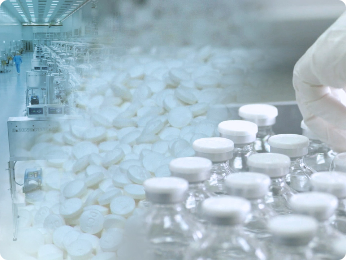Blog Details
Understanding Clean Room Classifications

Understanding Clean Room Classifications
A clean room is a controlled environment that is used to minimize the level of contamination from particulates, pollutants, and other impurities. The cleanliness of a clean room is defined by its clean room classification, which ranges from Class 10,000 to Class 1. In this article, we will discuss the different clean room classifications, their applications, and the factors that influence the level of cleanliness in each class.
What is a Clean Room Classification?
A clean room classification is a numerical value that represents the number of particles per cubic meter in a clean room. The lower the number, the cleaner the environment. The clean room classification system is based on the Federal Standard 209E, which was introduced by the United States government in the 1970s.
Clean Room Classifications
The following are the commonly used cleanroom classifications
Class 10,000
Class 10,000 is the least stringent clean room classification, with a maximum of 10,000 particles per cubic meter (0.5 to 5 microns diameters, but none with a diameter of 5 microns or greater). This classification is typically used in environments that require low to moderate levels of cleanliness, such as in electronic and computer manufacturing.
Class 1,000
Class 1,000 is a more stringent clean room classification, with a maximum of 1,000 particles per cubic meter (0.5 to 5 microns diameters, but none with a diameter of 5 microns or greater) . This classification is used in environments that require higher levels of cleanliness, such as in the pharmaceutical and biotechnology industries.
Class 100
Class 100 is even more stringent, with a maximum of 100 particles per cubic meter (0.5 to 5 microns diameters, but none with a diameter of 5 microns or greater). This classification is used in environments that require very high levels of cleanliness, such as in the production of semiconductors and other microelectronics.
Class 10
Class 10 is the most stringent clean room classification, with a maximum of 10 particles per cubic meter (0.5 to 5 microns diameters, but none with a diameter of 5 microns or greater). This classification is used in the most critical environments, such as in the production of disk drives and other highly sensitive components.
Factors that Influence Clean Room Cleanliness
There are several factors that influence the cleanliness of a clean room, including the materials used in construction, the air handling system, the personnel, and the cleaning procedures.
Materials
The materials used in construction can significantly impact the cleanliness of a clean room. For example, materials that emit particles, such as certain types of paint and adhesives, should be avoided. The flooring, walls, and ceiling should be smooth and easy to clean to minimize the build up of particulates.
Air Handling System
The air handling system is one of the most important factors in maintaining the cleanliness of a clean room. A properly designed air handling system should be able to filter out particulates, pollutants, and other impurities from the air. The system should also be able to circulate and filter the air regularly to prevent contamination from building up.
Personnel
The personnel in a clean room play a crucial role in maintaining its cleanliness. Personnel should wear protective clothing, such as gowns, gloves, and face masks, to minimize the introduction of particulates into the environment. Personnel should also be trained in proper clean room procedures, such as entering and exiting the room, handling materials, and cleaning procedures.
Cleaning Procedures
Cleaning procedures are critical to maintaining the cleanliness of a clean room. Cleaning procedures should be performed regularly and thoroughly to remove any particulates, pollutants, or other impurities that may have accumulated in the environment. Cleaning procedures should also be performed using appropriate cleaning supplies and techniques to minimize the introduction of additional impurities.
Conclusion
In conclusion, clean rooms are essential for various industries that require a controlled environment with minimal levels of contamination. The clean room classification system provides a standardized way to measure the cleanliness of these environments, with classes ranging from Class 10,000 to Class 1. Maintaining the cleanliness of a clean room involves several factors, including the materials used in construction, the air handling system, personnel, and cleaning procedures. By paying attention to these factors, industries can ensure the highest level of cleanliness in their clean rooms and produce high-quality products.


